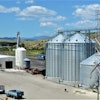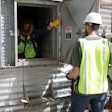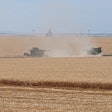
Purdue University’sAgricultural Safety and Health Programhas released its report on agricultural confined space-related injury and fatality cases documented during 2022.
There were 42 fatal and non-fatal grain entrapment cases documents in 2022, representing a 44.8% increase from the 29 recorded in 2021 and substantially higher than the five-year average of 35 cases per year. Nearly 36% of the cases involved a fatality, which was lower than the five-year average.
- The total of combined fatal and non-fatal grain entrapment cases was the highest annual frequency over the past decade.
- The five-year running average continues to be below its peak of 40.4 in 2011.
- 64% of grain entrapments occur in the Midwest. Iowa reported the most cases (9), followed by Indiana (6), Minnesota (6) and Ohio (6).
Grain-dust related explosions
In 2022, there were a total of nine grain dust explosions documented.
- Three of those incidents resulted in non-fatal injuries, with one Iowa explosion accounting for 15 injuries.
- No fatalities due to grain dust explosions were documented in 2022.
- The explosions occurred in one ethanol plant, two feed mills, two grain elevators, two rice mills, and two grain processing plants.
- Dust explosions occurred in seven different states, including Arkansas, Louisiana, New Mexico, Kansas, Iowa, Illinois and Ohio.
The role of out-of-condition grain
The report noted there is a direct relationship between the probability of an entrapment in grain and the presence of out-of-condition or spoiled grain.
For many years the term “flowing grain” was used to identify the entrapment hazards associated with grain storage and handling, when in fact it is non-flowing grain that poses the greatest risk.
Nearly all cases examined in 2022, in which adequate details were available, involved grain that was non-flowing due to spoilage.
Contributing factors included:
- Attempting to store grain at moisture content levels above 14%
- Improper in-bin drying practices such as rewetting grain using moist outside air
- Leaks in the structure that allowed moisture to have access to dry grain
"In other words, far more grain-related entrapments could have been prevented and lives saved by promotingproper storage techniquesthan could be achieved with providing training on emergency grain rescue strategies," said the report.
Agconfinedspaces.orgwas developed to provide resources for those conducting safety and health training in the area of agricultural confined spaces, with an emphasis on grain storage and handling hazards.
Training material, frequently asked questions, past summaries of injuries and fatalities, and an extensive list of resources can be found at the site.





















